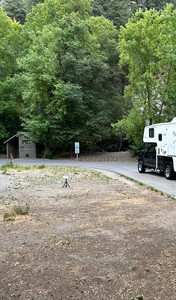Starlink Mini Review: Off-Grid Camping Internet That Actually Works
- Chris Barrera
- Sep 7
- 3 min read
Reliable internet in the backcountry has always been a challenge. For years, you had to rely on patchy cell signals, expensive satellite phones, or just go completely dark. Enter the Starlink Mini—a compact, portable version of SpaceX’s satellite internet system designed with off-grid users in mind.
I recently took the Starlink Mini on a multi-day camping trip in a heavily forested campground surrounded by cliffs and mountains. To my surprise, not only did I get a strong connection, but I was able to stream, upload, and work remotely without interruption. Here’s how it performed.
Setup and First Impressions
The Starlink Mini is much smaller than the standard dish, making it easier to pack alongside tents, stoves, and portable power gear. Setup took less than 10 minutes:
Place the dish with a clear(ish) view of the sky
Connect to the included router
Power it via portable battery or small solar generator
Even though I was surrounded by trees and terrain, I was able to angle the dish just right to find a pocket of open sky. That was enough to get reliable internet service.
Speed and Performance
Once connected, I was consistently pulling speeds up to 300 Mbps. For context, that’s enough bandwidth to:
Stream HD or even 4K video
Join video calls with zero lag
Upload photos and files quickly
Run multiple devices at once
What impressed me most was the stability. Even with occasional obstructions from trees, the Starlink Mini maintained a connection without major dropouts.
Power Consumption: More Efficient Than Expected
The Starlink Mini is officially rated for 100 watts of power draw. However, during my trip I consistently measured only 25–30 watts. This makes a huge difference for campers and off-grid travelers:
A 300Wh portable power station can run the Starlink Mini for 8–10 hours straight.
Pair it with a 768Wh mid-size station (like the EcoFlow RIVER 2 Pro), and you’re looking at more than 24 hours of continuous use.
With solar input, you could stay connected indefinitely.
For me, that meant I could run Starlink alongside lights, fans, and even a small fridge without draining my battery packs.
Pros and Cons
Pros
Compact and portable compared to standard Starlink
Blazing fast internet speeds up to 300 Mbps
Surprisingly low power draw (25–30W in real use)
Works even in challenging environments with trees and cliffs
Perfect for work, streaming, and staying connected while camping
Cons
Requires some view of the sky—thick canopy cover still causes interruptions
Not cheap (both hardware and monthly service)
Larger than typical camping gear, so you need to plan packing space
Best Use Cases
The Starlink Mini isn’t just for casual browsing. It shines in scenarios where you need real, high-speed internet off-grid:
Remote work while camping or overlanding
RV living or van life in areas with no cell coverage
Emergency communications during outages
Outdoor creators uploading video, photo, and drone footage in real time
Final Thoughts
The Starlink Mini is a game-changer for off-grid internet. On my recent trip, I went from expecting spotty service (or none at all) to having a stable 300 Mbps connection in the middle of a forested canyon. Combined with its unexpectedly low 25–30W power draw, it integrates seamlessly with portable power setups, making it ideal for campers and outdoor explorers.
If you’ve ever wished you could stay connected without sacrificing your time outdoors, the Starlink Mini proves it’s finally possible.
Disclosure: This post may contain affiliate links. If you purchase through them, Explore Camp Cook may earn a small commission—at no extra cost to you. Thanks for supporting more field-tested reviews and outdoor cooking adventures.








Comments